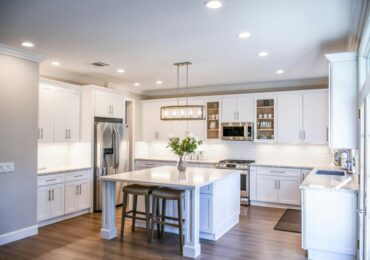A kitchen isn’t just a room; it’s the engine of the home. Or, in professional settings, the heartbeat of an entire operation. From the rhythmic sounds of chopping and sizzling to the quiet hum of precision equipment, a well-designed kitchen transforms everyday cooking into an extraordinary experience.
But a high-performance kitchen doesn’t happen by accident. It’s built with intention, efficiency, and a dash of inspiration. Whether you’re crafting gourmet meals in a restaurant or refining your culinary setup at home, the design of your space directly impacts your creativity, confidence, and results.
Here’s how to design a kitchen that performs as beautifully as it looks.
Step 1: Introduce Flow First
The best kitchens are built on flow. Every tool, surface, and appliance should support the natural rhythm of cooking, allowing you to move effortlessly from prep to cook to clean.
Start by mapping out your work triangle. This is the relationship between the stove, sink, and refrigerator. Keeping these points close but unobstructed ensures you save time and energy with every dish.
Professional kitchens rely on clear zones for specific tasks: preparation, cooking, plating, and cleaning. Applying that same structure at home can transform a cluttered workspace into a well-choreographed environment where every motion has purpose.
Efficiency isn’t about speed. It’s about synergy. When your kitchen flows, your creativity follows.
Step 2: Equipment That Works as Hard as You Do
Behind every exceptional kitchen is reliable equipment. From heavy-duty mixers to ergonomic utensils, high-quality tools enhance both performance and safety.
If you’re designing a professional or semi-professional space, invest in equipment built for longevity. Stainless steel counters, commercial-grade hobs, and energy-efficient appliances don’t just look sleek; they’re built to endure high use while maintaining top-tier performance.
Think of your kitchen as a partner, not a project. The right setup should empower you to work smarter, not harder.
Step 3: Provide Comfort
Professional chefs know that comfort fuels performance. Spending hours on your feet in a demanding environment requires thoughtful design, which applies as much to clothing as it does to countertops.
From supportive flooring to breathable attire, comfort plays a vital role in maintaining focus and energy. Investing in gear designed for movement and durability, such as www.chefworks.com/chef-pants, ensures that your attire works with you, not against you.
Lightweight, flexible materials make a world of difference in fast-paced settings. They allow chefs and passionate home cooks to stay cool, agile, and inspired through every service or family meal. Comfort isn’t indulgence; it’s performance science.
Step 4: The Right Lighting
A great kitchen inspires. Lighting sets the tone and defines the atmosphere, from warm pendant lights over an island to bright task lighting above a cutting board.
Natural light energizes, while layered artificial lighting enhances visibility and mood. Task lights ensure precision, ambient lighting creates comfort, and accent lights showcase craftsmanship.
When balanced correctly, lighting doesn’t just make food look better. It makes you feel better. It turns the everyday act of cooking into a sensory experience.
Step 5: Install Storage That Simplifies, Not Complicates
Clutter slows creativity. A high-performance kitchen thrives on simplicity and organization. Every item should have a place that’s both accessible and logical.
Consider pull-out drawers for cookware, hanging racks for utensils, and labeled containers for ingredients. Vertical storage solutions maximize space while maintaining easy access, which is perfect for smaller kitchens.
An organized space fuels a focused mind. When your environment feels effortless, cooking becomes an act of enjoyment, not endurance.
Step 6: Cultivate Your Mindset of Continuous Improvement
A high-performance kitchen evolves with you. As your skills grow, so should your space. Evaluate what’s working, what slows you down, and what sparks inspiration.
Maybe it’s time for an upgraded appliance, new seating for social cooking, or a sustainable redesign that saves energy. The goal isn’t perfection. Rather, it’s progress.
Great chefs and great designers share one thing: they never stop refining.
